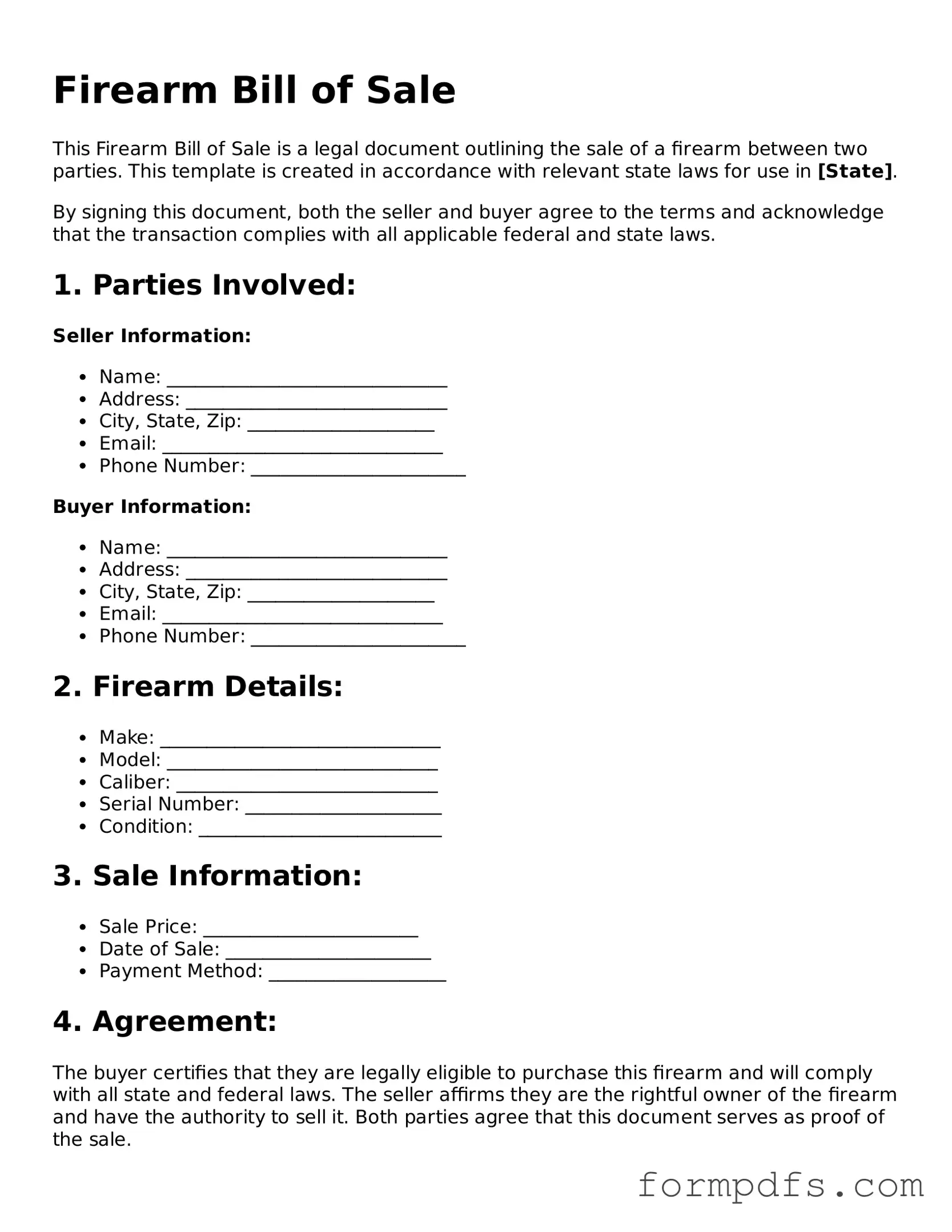What is a Firearm Bill of Sale?
A Firearm Bill of Sale is a legal document that records the sale or transfer of a firearm between two parties. This form serves as proof of the transaction and includes important details such as the buyer's and seller's information, the description of the firearm, and the date of the sale. Having this document can help protect both parties in the event of a dispute or legal issue regarding the firearm.
Is a Firearm Bill of Sale required by law?
The requirement for a Firearm Bill of Sale varies by state. Some states mandate that a bill of sale be completed for all private firearm transactions, while others do not have such requirements. Even if not legally required, it is advisable to use a bill of sale to ensure that the transaction is documented and to provide a record of ownership transfer.
What information should be included in a Firearm Bill of Sale?
A comprehensive Firearm Bill of Sale should include the following information: the names and addresses of both the buyer and seller, the date of the transaction, a detailed description of the firearm (including make, model, caliber, and serial number), and the sale price. Additionally, both parties should sign the document to validate the transaction.
Can I create my own Firearm Bill of Sale?
Yes, you can create your own Firearm Bill of Sale. However, it is crucial to ensure that the form complies with your state’s laws. Many templates are available online that can guide you in drafting a legally sound document. Always double-check to make sure all necessary information is included and that the form meets legal requirements.
Do I need to have the Firearm Bill of Sale notarized?
Notarization is not typically required for a Firearm Bill of Sale, but it can add an extra layer of legitimacy to the document. Some states may have specific requirements regarding notarization, so it is wise to check local laws. If both parties agree, having the bill of sale notarized can help prevent future disputes.
What should I do with the Firearm Bill of Sale after the transaction?
After completing the Firearm Bill of Sale, both the buyer and seller should keep a copy for their records. This document serves as proof of the transaction and can be useful in case of future legal issues. Storing it in a safe place is recommended, as it may be needed for verification of ownership or in the event of theft or other legal matters.
What if I lose my Firearm Bill of Sale?
If you lose your Firearm Bill of Sale, it is advisable to contact the other party involved in the transaction to request a duplicate. If that is not possible, you may need to create a new bill of sale and have both parties sign it again. Keeping a digital copy or storing it in a secure location can help prevent loss in the future.
